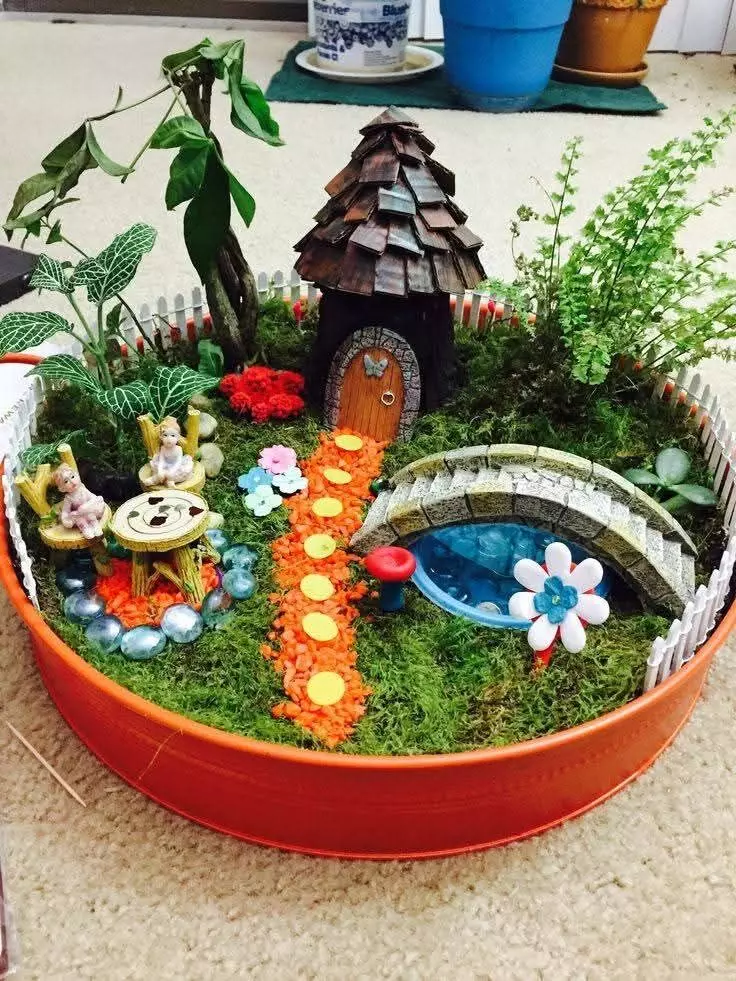What are dish gardens? Why have they become popular?
Dish gardens typically contain at least three different kinds of plants
By Beyniaz Edulji
Hyderabad: People who love gardens, plants, and greenery but are constrained by the available space in their homes and who live in small-sized apartments need not despair. Dish gardens are growing in popularity. They take very little space, maintenance, and time.
Assembling a Dish Garden
Dish gardens typically contain at least three different kinds of plants. Adequate drainage is probably the most important provision to ensure the success of your dish garden. The best method of draining the excess water from the soil is through a drainage hole in the bottom of the planter. The hole should be covered with a piece of broken pottery or a screen patch to prevent the soil from washing out. This type of planter will require placing a water-tight tray under the garden to protect the table or other surfaces from water damage. A few strategically placed rocks or stones in the arrangement and colored sand on the topmost layer make the Dish Garden look more attractive.
Choose slow-growing plants
Unfortunately, because dish gardens typically have limited root space, the plants will tend to outgrow their home rather quickly. For this reason, it is a good idea to choose slow-growing plants to prevent having to replace them too often. Choose “like-minded plants” that have the same general lighting, soil, and water requirements as your other choices.
A Forest Garden
Rekha Bayanker regularly holds demonstrations in Hyderabad. She has been making various types of dish gardens for over 25 years. She showed us how to create a beautiful dish garden within 20 minutes in an oval ceramic container. The theme was ‘A Forest Dish Garden’ to bring the forest into one’s home. The forest in a dish was decorated with clay animals painted with organic colours. Rekha says, “Gardens in Dishes can facilitate indoor landscapes, greenery, or colors and aesthetically enhance interiors of flats in places which have no land space for a conventional garden. Garden enthusiasts can start with similar plants in a dish. They can use crotons, flowering plants, plants with similar leaf colors, and hybrid hibiscus. Use perennials, annuals, facts, and succulents to good effect.”
Ideal for summer
First, the bottom layer of the ceramic tray was covered with broken bricks. Rekha advises the use of special soil for good drainage, which is sieved with vermicast soil, charcoal, sand, and coconut peat to prevent root rotting. She says that “These gardens in dishes are especially good for working people as they do not have to be watered daily. You don’t have to spend much time watering them, and these can be watered once a week as coconut peat retains a lot of moisture. Use regular plants, not bonsais.”
Bowls, mugs, and teapots can be used
A dish garden can also be an arrangement of plants placed inside dishware. Unlike plant pots, dishes don't have drainage holes. The main difference between a potted floral arrangement in a gardening pot and a dish garden is that actual dishware is used. The dishware used in dish gardens may be novelty or everyday items such as cereal bowls, coffee mugs, or they even may be ornamental pieces.
Makes a nice gift
A dish garden can be the perfect size as a centerpiece for an outdoor coffee table. Dish gardens can also make ideal housewarming gifts since they can add a natural touch to a new home. While many dish gardeners purchase their containers or use dishware they have at home, kits are also available that include dishes for the gardens. Dish garden kits usually have flower seeds rather than growing plants, so it is interesting to watch the different plants start to grow and bloom.
Although these arrangements of plants need very little looking after and can even be perched on a window sill, they do need some amount of sunlight, without which, they cannot live.